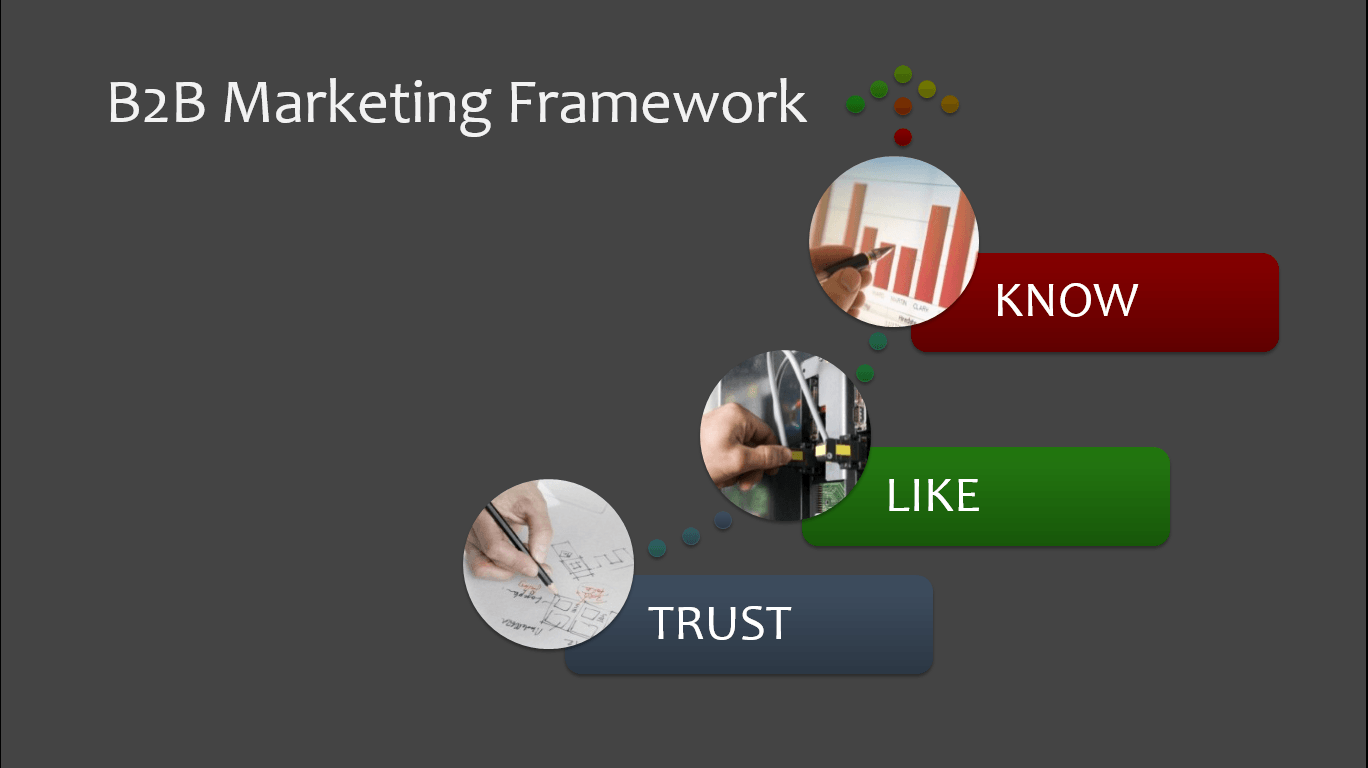What Is The Best Marketing for Small Business?
You really don’t understand a concept until you know what it’s made of. The normal framework of small business b2b marketing (filled with a ton tactics) is dismal at best. The tactics are so numerous, expensive and sometimes emotional that we easily focus on the shiny and urgent instead of the important. Perhaps we could try a different approach:
Here’s my take – the real problem in B2B marketing lies in the fact that you don’t simply generate a customer today, you date it.
Today I would like to outline what the best marketing (dating) framework might actually look like from a tactical standpoint for a typical service business.
Know Phase
This phase is about creating awareness so while it normally starts with a referral from a strategic partner, it’s often the act of putting content or marketing communication out there that gets the attention of your prospect.
If you’re a service business, high-quality content and referrals are your most effective form of awareness.
You may be creating awareness to attract more clients to your service business. You may be creating awareness for your product. You may be creating awareness for your methodology or process.
Know Tactics
- Podcasting/online radio, or Adwords ad promoting free content that is related to your business or service offering but doesn’t sell directly
- blog posts answering common client challenges amplified on social media platforms
- LinkedIn promoted post for access to free content
- LinkedIn groups discussions geared towards blog posts and free content
Like Phase
Imagine two people with an identical product and an identical price.
One person comes across as boring and impersonal. The other is charming, interesting, and makes you feel good. Which one would you rather continue talking to and do business with?
In this step you must move towards gaining permission to continue a conversation. The key here is your email capture activities.
Like Tactics
- Create landing pages for specific content and social networks
- Create landing pages with a month long autoresponder that delivers even more information
- Offer a weekly newsletter to every person who downloads your content
Trust Phase
While you’re developing “the Know” through content, advertising, networking and referrals, “the Like” through your website, landing pages, reception, and drip emails, you’re still not directly selling. But you are paving the road to eventually selling your product or service that’s related to your marketing down the line.
When it comes to selling your products or services, know and like alone are rarely enough — you need to become trusted .
Trust is the most important element and can’t be simply manufactured through one or two tactics – it’s comes from integrating many activities.
Trust Tactics
- Consistently deliver your newsletter
- Educate at every stage – don’t promote
- Get backlinks from reputable and authoritative websites
- Participate on Facebook, LinkedIn, Google+ and Twitter by sharing great content and helping others find what they want,
- Consistently write educational and insightful blog content,
- Stimulate reviews on sites like Google+, LinkedIn and Yelp,
- Submit press releases to online distribution sites such as PRWeb
- Locate industry or local publications that accept contributed guest content
Some questions you must ask: Does this interaction lead to know, like or trust? Do our services, processes and products support our framework? Is the framework pulling in numbers that demonstrate that it’s working?
In that light, what are you working on? If it’s not one of these three, you’re not going to seriously change the dynamic of your marketing, why exactly are you bothering?





